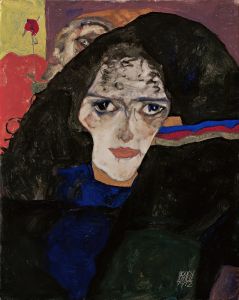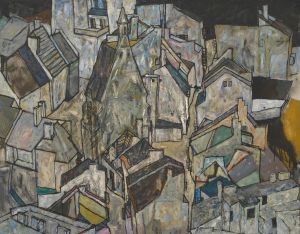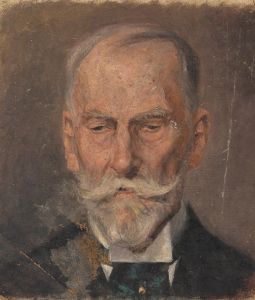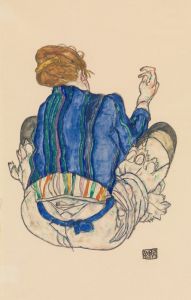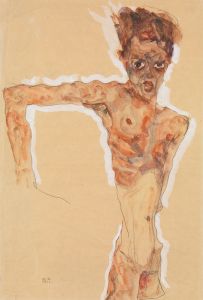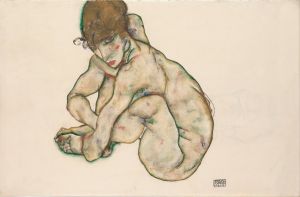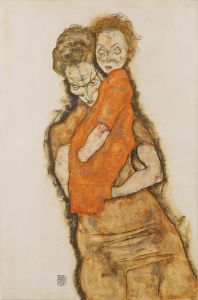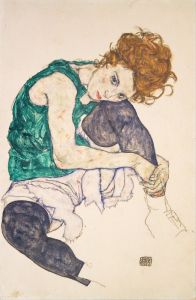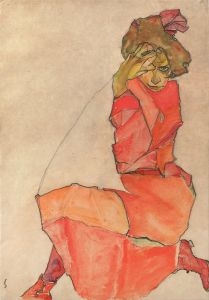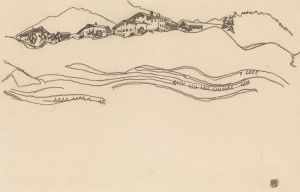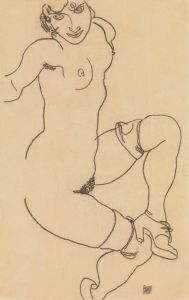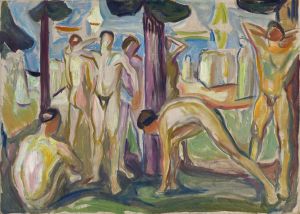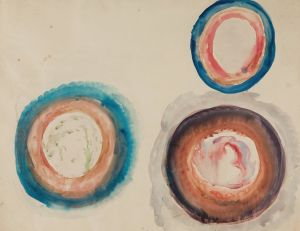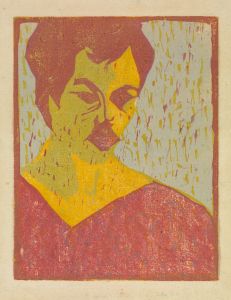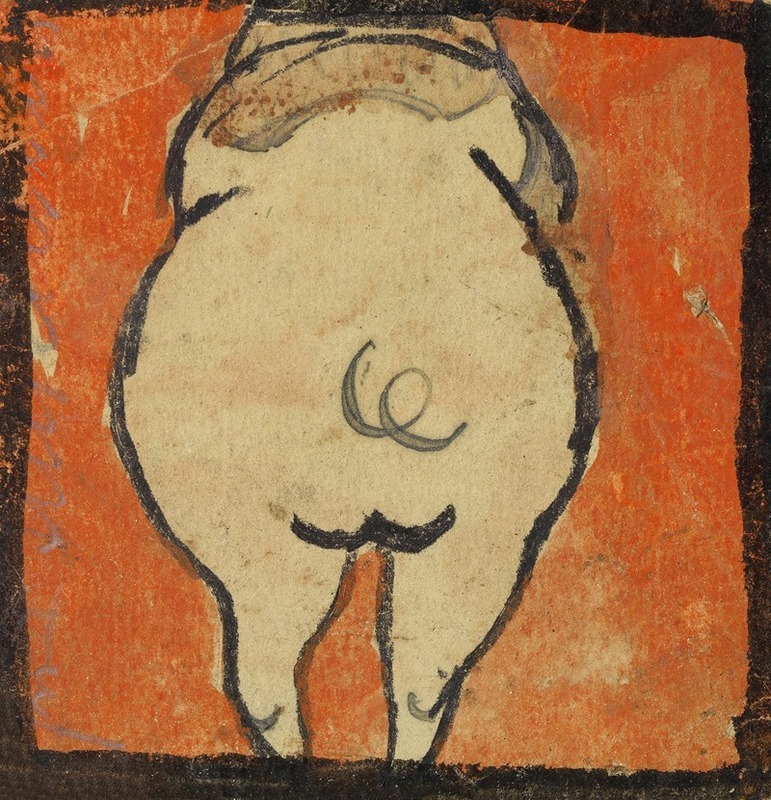
Schwein von hinten
A hand-painted replica of Egon Schiele’s masterpiece Schwein von hinten, meticulously crafted by professional artists to capture the true essence of the original. Each piece is created with museum-quality canvas and rare mineral pigments, carefully painted by experienced artists with delicate brushstrokes and rich, layered colors to perfectly recreate the texture of the original artwork. Unlike machine-printed reproductions, this hand-painted version brings the painting to life, infused with the artist’s emotions and skill in every stroke. Whether for personal collection or home decoration, it instantly elevates the artistic atmosphere of any space.
Egon Schiele, an Austrian painter known for his distinctive and provocative style, created the artwork "Schwein von hinten" (translated as "Pig from Behind") in 1917. Schiele was a prominent figure in early 20th-century art, associated with the Expressionist movement, which sought to convey emotional experience rather than physical reality. His work is characterized by its intensity, rawness, and often controversial subject matter.
"Schwein von hinten" is a lesser-known piece within Schiele's oeuvre, which primarily consists of figurative works, including portraits and nudes. This particular drawing, however, diverges from his usual focus on the human form, instead depicting an animal subject. The piece is executed in pencil and watercolor on paper, showcasing Schiele's adeptness with line and his ability to imbue even non-human subjects with a sense of vitality and tension.
The drawing portrays the rear view of a pig, rendered with Schiele's characteristic sharp lines and attention to detail. The choice of subject matter is unusual for Schiele, who rarely depicted animals in his work. However, the piece still reflects his interest in exploring the less conventional aspects of life and nature, challenging the viewer to find beauty and meaning in unexpected places.
Schiele's work often elicited strong reactions due to its unflinching portrayal of subjects and its exploration of themes such as sexuality, death, and existential angst. While "Schwein von hinten" may not delve into these themes as explicitly as some of his other works, it still embodies his approach to art as a means of confronting and examining the world in its entirety, including its more mundane or overlooked elements.
The period during which Schiele created this drawing was marked by significant personal and professional developments. In 1917, Schiele was living in Vienna, having recently married Edith Harms. This time also saw a shift in his artistic style, with his work becoming more refined and his palette more subdued compared to his earlier, more vibrant pieces. Despite these changes, Schiele maintained his commitment to capturing the essence of his subjects, whether human or animal.
"Schwein von hinten" is part of a broader body of work that continues to be studied and appreciated for its contribution to modern art. Schiele's ability to convey complex emotions and his innovative approach to form and composition have cemented his place as a significant figure in art history. His works are held in numerous prestigious collections worldwide, and exhibitions of his art continue to draw interest from scholars and art enthusiasts alike.
While "Schwein von hinten" may not be as widely recognized as some of Schiele's other pieces, it remains an intriguing example of his artistic exploration and his willingness to push the boundaries of conventional subject matter. Through this work, Schiele invites viewers to reconsider their perceptions and to find depth and significance in the everyday and the overlooked.





